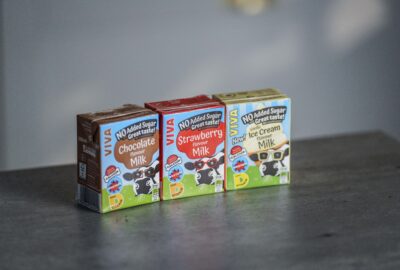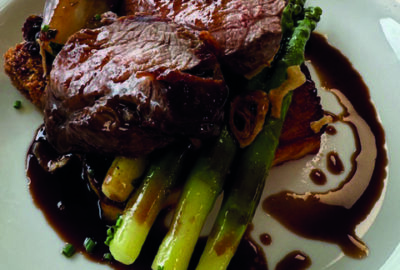As deliveries and meal kits continue to rise in popularity, a new model for restaurants has emerged that is geared towards a digital first approach to hospitality. What was once a small, little-known burgeoning operation, dark kitchens are now booming with investment and growth, however it is not a world without its difficulties. Also known as cloud kitchens, ghost kitchens, virtual kitchens or delivery-only restaurants, they have enabled many restaurateurs to survive the challenges of the Covid pandemic and for some, initiated a sea-change in the way they operate for good.
What is a dark kitchen?
Dark kitchens are highly efficient production units optimised for delivery, featuring a kitchen with no shopfront or seating. Operating via an online ordering system or app, food is prepared to order, collected by drivers and delivered directly to the consumer (although some also operate with a collection facility).
Fueled by developments in technology and online ordering platforms such as Uber Eats and Deliveroo, dark kitchens have progressed exceptionally quickly, but before you jump in and get going, it is important to work out the right business model to suit your needs – and with dark kitchens, there’s plenty of options to choose from.
A business model for all budgets
The ‘traditional’ dark kitchen was the first model launched; one brand owns or rents a location and offers a single menu to its customers – all available to order on any one of the many apps available. A variation on this theme is the ‘multi-brand’ dark kitchen where a single operator produces food under multiple brands, all from the same kitchen to keep costs to a minimum. The traditional models were swiftly followed by the ‘takeaway’ dark kitchen which enables customers to wait and collect their food from the premises, but no seating or dining area is provided.
Since the pandemic, investment in dark kitchens has reached an all-time high and increasing number of ‘aggregator-owned’ dark kitchens have emerged. Aggregator-owned operations can be the most cost-efficient model because a premises is divided into multiple units from which individual operators can rent a kitchen. Deliveroo Editions is one such operator, renting space to brands including Dishoom, Five Guys, Bleeker, Shake Shack, Pho and Rosa’s Thai. However, over the years, there has been some discord with commission and missed delivery fees charged by Deliveroo, making the model unsustainable for some small businesses.
Enter a new take on this concept – Karma Kitchen who break down their spaces by time of day, recognising that many operators have different needs. “A food truck, say, will want to work in the morning, while takeaways will need space during the nighttime rush, so Karma Kitchen has morning-evening shifts for renters. Sharing all the cleaners and porters and operating on a bigger scale only adds to that efficiency.” Says Eccie, co-owner of Karma Kitchens. Offering a comprehensive spectrum of rental options from workbenches in shared kitchens to private spaces, Karma Kitchens prides itself on lowering the barriers to businesses so they can pay for what they need without too much risk exposure.
The final model is the ‘outsourced’ dark kitchen which occurs when a brand outsources the production of their menu to another company, before applying finishing touches to the meals themselves.
The benefits of dark kitchens
The restaurant industry is notorious for high overheads which can sometimes be prohibitive for start-ups and small businesses. Dark kitchens reduce many of these operational costs because they do not rely on prime real estate, a front of house team or investment in interiors and tableware to function. Tech savvy business owners have access to real-time data which helps maximise sales opportunities, determine demand and automate key processes.
The focus of a dark kitchen is primarily on the food, by reducing operational costs, businesses can afford to invest in better quality ingredients which helps secure their brand reputation and build a strong customer base.
The flexibility afforded by dark kitchens is limitless – one company can operate multiple brands and cook many different cuisines under the same roof, trialing and changing the menu to respond to consumer demand. However, don’t be fooled into thinking that you need to offer a broader menu. Lizzy Barber, Head of Brand Marketing at The Hush Collection notes: “We’ve found customers want choice, but don’t want to be overwhelmed by it. It’s about giving a good selection of dishes that are instantly appealing. We don’t hang about and are constantly assessing our menu range to see what can be improved. Dark kitchens teach you to think outside (or should it rather be ‘inside’) the box, as you not only have to think about flavours and presentation, but how the dishes will look and taste once they’ve been transported across town.”
Before you start…..
Once you have decided upon the right business model to suit your needs, there are a few fundamentals you need to get to grips with. Although dark kitchens don’t need a high street presence to operate, you do need to have enough customers within a 3 mile radius to keep your kitchen busy, so research the demographics, competition and population density before you settle on a premises.
No matter where you set up your operation, you will need to make every square inch of the premises count, ensuring shelving is unobstructed, workstations are constructed for maximum productivity and you can quickly respond to the needs of the business. As Nisar Hussain, Operations Director at AA Food Concepts explains, launching a dark kitchen for the brand meant a new way of working both front, as well as back of house: “In comparison to a typical Creams restaurant, space is at even more of a premium in our Doncaster kitchen and we ended up having to fit the same amount equipment in half the space which was no easy task. We need to be really organised to work efficiently to maximise our productivity – we needed more order.”
Technology is another key consideration. Operators can choose to offer their own delivery service or use a third-party provider. There are pros and cons to each route – a third-party offers convenience and reach but the commission fees (and hidden fees) can erode your margins, while an owned system requires upfront investment in technology and marketing to get the reach. Should you choose to work with multiple third-party applications, aggregating your orders through supporting software will be necessary to stay on top of deliveries, or you risk driving your team mad as they reconcile each order with the right fulfilment partner.
Whichever route you take, marketing your business is not optional – its a must – because ultimately, it’s the only tool you have to let your customers know you exist. “For brand and marketing, it’s very difficult to get cut through without having a physical presence or ‘shop front.’ Even though so much of brand and marketing is now digital, people always like the reassurance of having seen a brand ‘in the flesh’. From an operational point of view, you’re very reliant on how the product is delivered, which you have no control over. We can only do so much to make a product delivery perfect, but once it leaves our kitchens, it’s out of our hands.” Comments Lizzy.
Running a dark kitchen may not be for everyone, it comes with its own pressures and the sector is developing at a very fast rate, however for those experiencing too many barriers to entry with dine-in premises, they could prove to be a much-needed solution and a fantastic way to trial new menu concepts. With investors such as Amazon ploughing £millions into the market, dark kitchens will certainly be keeping their lights on for a long time to come.
Call Out
The top 10 dishes ordered for delivery in the UK (according to Deliveroo) in 2021 included cheeseburgers, burritos, pad thai, daal and frozen yoghurt, however build your own poke bowls topped the list.
With any delivery operation, make sure you think about how your food will be presented once received. Spend time researching packaging for the best solution and to ensure any hot food will not arrive cold.


